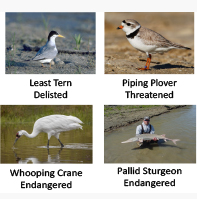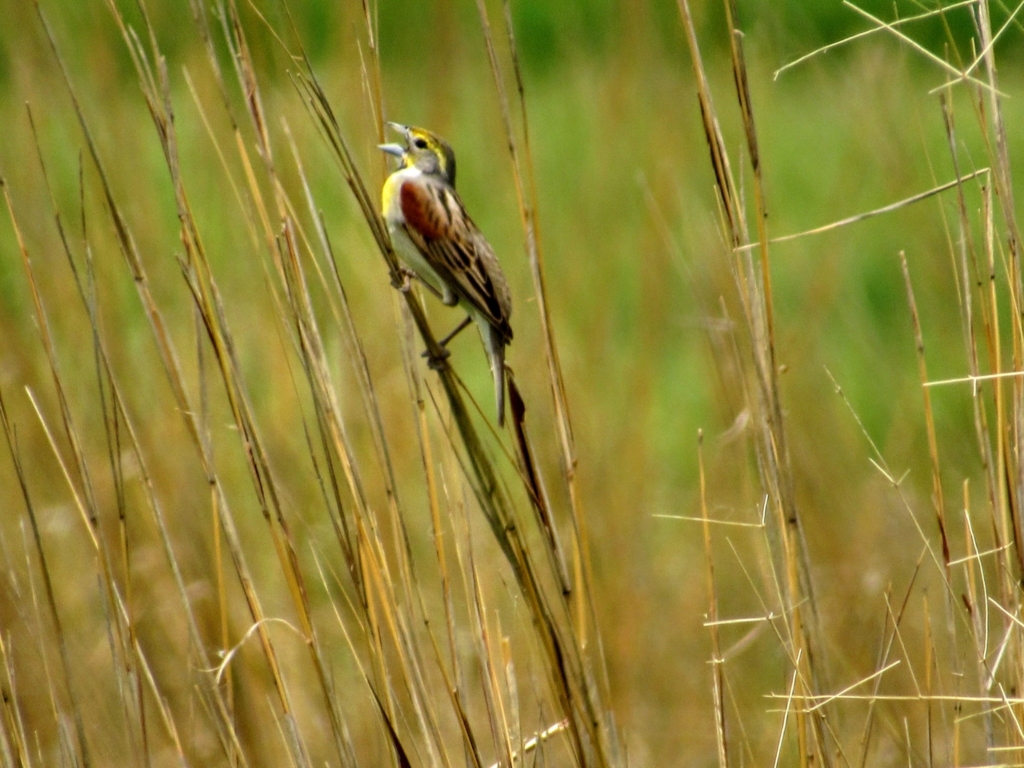Providing Wildlife Habitat
Many of the NRD's flood risk reduction projects lower flood risk while enjoying the benefits of enhancing habitat essential for wildlife, including threatened and endangered species.
15-Year Review of Central Platte NRD's Instream Flow Rights Approved
 The Nebraska Department of Natural Resources (NeDNR) recently approved the 15-year review of Central Platte NRD’s instream flow rights, ensuring continued habitat protection for threatened and endangered species along the Platte River. In August, NeDNR issued an Order confirming that CPNRD’s instream flow appropriations are being used beneficially, serve the public interest, and should remain in effect without modification.
The Nebraska Department of Natural Resources (NeDNR) recently approved the 15-year review of Central Platte NRD’s instream flow rights, ensuring continued habitat protection for threatened and endangered species along the Platte River. In August, NeDNR issued an Order confirming that CPNRD’s instream flow appropriations are being used beneficially, serve the public interest, and should remain in effect without modification.
CPNRD remains the only NRD with instream flow water rights on the Platte River, dedicated to protecting and enhancing wildlife habitats. These rights, which prioritize the needs of wildlife, date back to July 25, 1990. CPNRD initially applied for the rights after conducting an extensive study in response to concerns over low river flows, particularly during dry summer periods that pose risks to fish and wildlife dependent on the river. The approval of a series of instream flow rights to maintain minimum flows for these species was granted on July 2, 1992.
The specified flows under these rights play a crucial role in maintaining bird habitats along the Platte, as well as sustaining food sources for the birds. Importantly, these water rights do not impact the levels of upstream storage reservoirs, such as Lake McConaughy, nor do they restrict water availability for existing irrigators. While existing senior water rights take precedence, future projects must meet the minimum flow requirements outlined by CPNRD’s instream flow rights before diverting water from the Platte.
The appropriations cover various stretches of the Platte River, generally between Lexington and Columbus, NE, and are vital to preserving habitats for four bird species: the endangered whooping crane, sandhill crane, least tern, and the threatened piping plover. The rights either directly contribute to maintaining the birds’ habitat or support the production of food sources critical to their survival. In 2009, CPNRD completed its required 15-year review, extending the instream flow rights through 2024. With this latest approval, CPNRD’s instream flow rights are now secured until the next review in 2039.
Watershed Protection & Flood Prevention Act
Large-scale flood reduction projects require partnerships and funding from local, state and federal agencies. Funding from federal agencies have habitat requirements under the Watershed Protection & Flood Prevention Act. The Soil Conservation Service at the Department of Agriculture provides planning assistance and construction funding for projects constructed by local sponsors such as Natural Resources Districts.
Most wildlife habitat on projects are established through acquisition of perpetual wetland and floodplain easements for flood management and storage purposes, for water quality and quantity improvement, and for fish and wildlife.
Wetlands provide habitats for sport fish, migratory birds, mammals, reptiles, and amphibians that rely on wetlands for shelter, breeding and feeding. They also provide unique habitat for endangered plants and animals. In addition to habitat, wetlands have beneficial microorganisms (called biofilm) that live on wetland plants and process some forms of pollution. Roots of wetland vegetation hold soils in place, thus stabilizing the banks of rivers and streams.

 The Nebraska Department of Natural Resources (NeDNR) recently approved the 15-year review of Central Platte NRD’s instream flow rights, ensuring continued habitat protection for threatened and endangered species along the Platte River. In August, NeDNR issued an Order confirming that CPNRD’s instream flow appropriations are being used beneficially, serve the public interest, and should remain in effect without modification.
The Nebraska Department of Natural Resources (NeDNR) recently approved the 15-year review of Central Platte NRD’s instream flow rights, ensuring continued habitat protection for threatened and endangered species along the Platte River. In August, NeDNR issued an Order confirming that CPNRD’s instream flow appropriations are being used beneficially, serve the public interest, and should remain in effect without modification.




